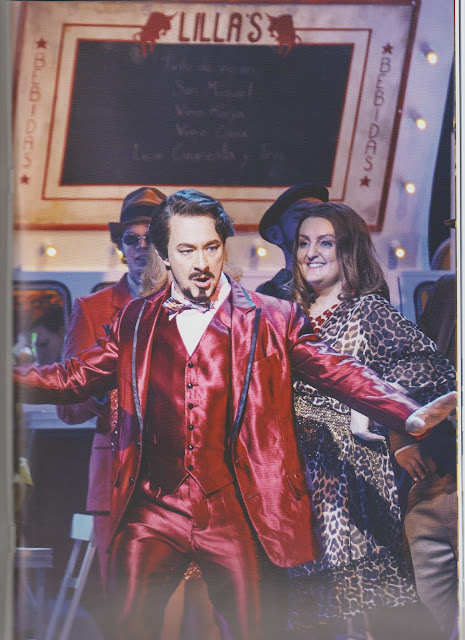Carmen by Georges Bizet. Libretto by Henri Meilhac and Ludovic Halévy. Opera Australia directed by John Bell. Sydney Opera House, June 16 – August 12, 2016.
Designers: Set by Michael Scott-Mitchell; Costumes by Teresa Negroponte; Lighting by Trent Suidgeest; Choreography by Kelley Abbey; Fight Choreography by Nigel Poulton.
Reviewed by Frank McKone
July 29
I wanted to see Carmen as directed by John Bell. Could he, after such a wonderful Shakespeare’s The Tempest a year ago, strike the right note in this opera, which I have either thought of as an artificially ‘tragic’ love story or, as in one production I saw, a superficial concert of popular music.
Well, Carmen’s plot and libretto nowhere match Shakespeare, but Bell has done the trick. Bizet’s music is far better than the libretto deserves. Bell has clearly taken the music as his cue to finding the motivations for the characters and the emotional tone of each scene. And so we are taken from the light to the dark; from the light-weight to the heavy. His final scene entirely concentrates on José’s overwhelming obsession, stalking Carmen until he feels he has ‘no choice’ but to kill her.
We only have to read the Canberra news of the recent axe murder to recognise the reality behind Bizet’s ‘romance’. Awful though it is, Bell’s work shows how clearly this ultimate violence is never the woman’s fault. Carmen demands her independence as all women should. It’s the men who cannot accept women’s rights – as is too often still the situation in too many countries around the world today.
So, thank you, John Bell. I’m glad I went to see your Carmen.
As the curtain dropped on José’s seeming attempt to rape the body, it was moot whether we should stay silent or applaud in the conventionally operatic manner. We were not left long in suspense as the curtain rose for the call – and the applause was heartfelt and it seemed would never end in appreciation for the cast, the orchestra, the stage design: for a show that was never artifically tragic and certainly never a superficial concert.
Bell’s Director’s Note, handed out to everyone who had not spent $20 on the complete very glossy program, explains his reasoning for his updating elements of this 1875 original setting in Spain to a mythical Cuba with its down-at-heel buildings and motor vehicles - and also with the feel for the music, dance and colour of Havana. Shifting to this imagined world of soldiers, villagers, popular heroes, criminals and rebels made me see Carmen not as some kind of romantic celebration of Spain, with Carmen an exponent of exciting flamenco. As the program explains, this became the de rigeur approach only in the 1890s, well after Bizet’s untimely death at the age of 36, only three months after Carmen opened.
But just think of what happened in the Spain of General Franco from the 1930s to his death so recently in 1975 to see how prescient were Bizet and his librettists; and then think of Syria, Iraq and Afghanistan today. Though Bell kept to the original story of gypsies fighting for their freedom in the mountains, and the fascination with bullfighting, in his setting the story becomes a modern metaphor for the struggle for genuine democracy and human rights over the forces of terror and dictatorship. Think of Turkey and President Erdogan right now.
So thanks again, John Bell.
 |
| Jane Ede as Frasquita, Clémentine Margaine as Carmen, Margaret Trubiano as Mercedes |
 |
| Clémentine Margain as Carmen |
 |
| Natalie Aroyan as Micaëla |
 |
| Michael Honeyman as bullfighter Escamillo |
 |
| Village Scene |
 |
| Clémentine as Carmen |
©Frank McKone, Canberra

No comments:
Post a Comment